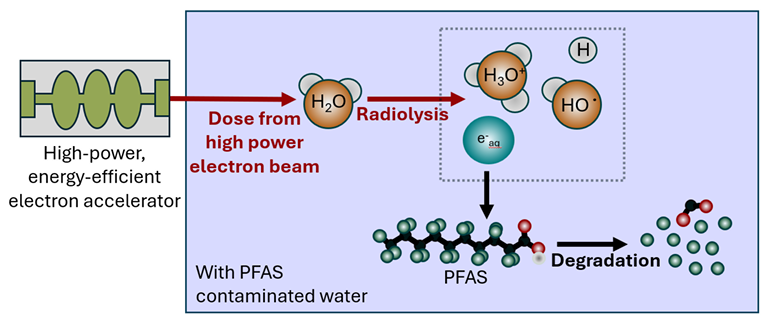
By summerstudent Myrto Mangana>
One cultural shock I experience every time I travel to other European countries is the lack of water in people’s everyday habits – and how it is replaced by other beverages. 9 out of 10 waters are sparkling, and usually quite expensive.
But for me, water is everywhere. I spend half my day drinking it. So, to satisfy my thirst here in Berlin, I carry around a one-liter bottle that I refill from taps wherever I go. Still, I think we can all agree that tap water in some countries has a weird taste and it might not always be super clean.
When we think about water purification, most of us picture a filter: a device that traps particles and pollutants physically, removing chlorine, metals and bacteria, but with limited sterilization capacity. It usually doesn’t remove micropollutants, and if you don’t change it, the filter itself can end up becoming a source of contamination. Per- and polyfluoroalkyl substances (PFAS), often called “forever chemicals” are extremely persistent toxins used in products like waterproof fabrics and firefighting foams, that leak into water supplies, accumulate in the environment and the human body, and are linked to increased risks of cancer and diabetes. Removing them is notoriously difficult.
Surely there must be a solution to the problem…
Electron accelerators!!
One of the uses of an electron accelerator is to treat water. In fact, this type of purification is both chemical and radiative and it removes PFAS, microorganisms, viruses, organic pollutants and toxins with very high sterilization efficiency. All this, quickly and easily, with no added chemicals and no production of toxic by-products:
Electrons are produced in a setup called electron gun, similar to the one used in CRT televisions. Then they strike a cathode that emits electrons. The cathode is in a vacuum environment, so that the electrons are not stopped by air molecules. That’s how the electron beam is created.
The beam then is accelerated in RF cavities, by high-frequency radio waves that rhythmically push the electrons forward, making them reach almost the speed of light in just a few centimeters! Magnets and lenses are used to move and focus the beam, which then passes through a special pressure-separating membrane and hits the water.
That’s where the magic happens.
The electrons collide with water molecules that break down into H3O+, OH●, H● and free radical electrons. These electrons then initiate the degradation of PFAS into shorter chains or biodegradable molecules!

Researchers at Helmholtz-Zentrum in Berlin envision a mobile superconducting accelerator (SRF) that can be transported to pollution hotspots (like the former Tegel Airport) and clean large volumes of water quickly (up to 1,000 cubic meters of water per day).
Looks like electron accelerators might just be the water filters of the future. Get one now and impress your friends before it’s mainstream.

About the author: Myrto Mangana is a summerstudent in the ISSP2025 Programme. She is working in the team of Thorsten Kamps at the SEALAB linear accelerator, measuring the beam emittance from a SRF gun.
